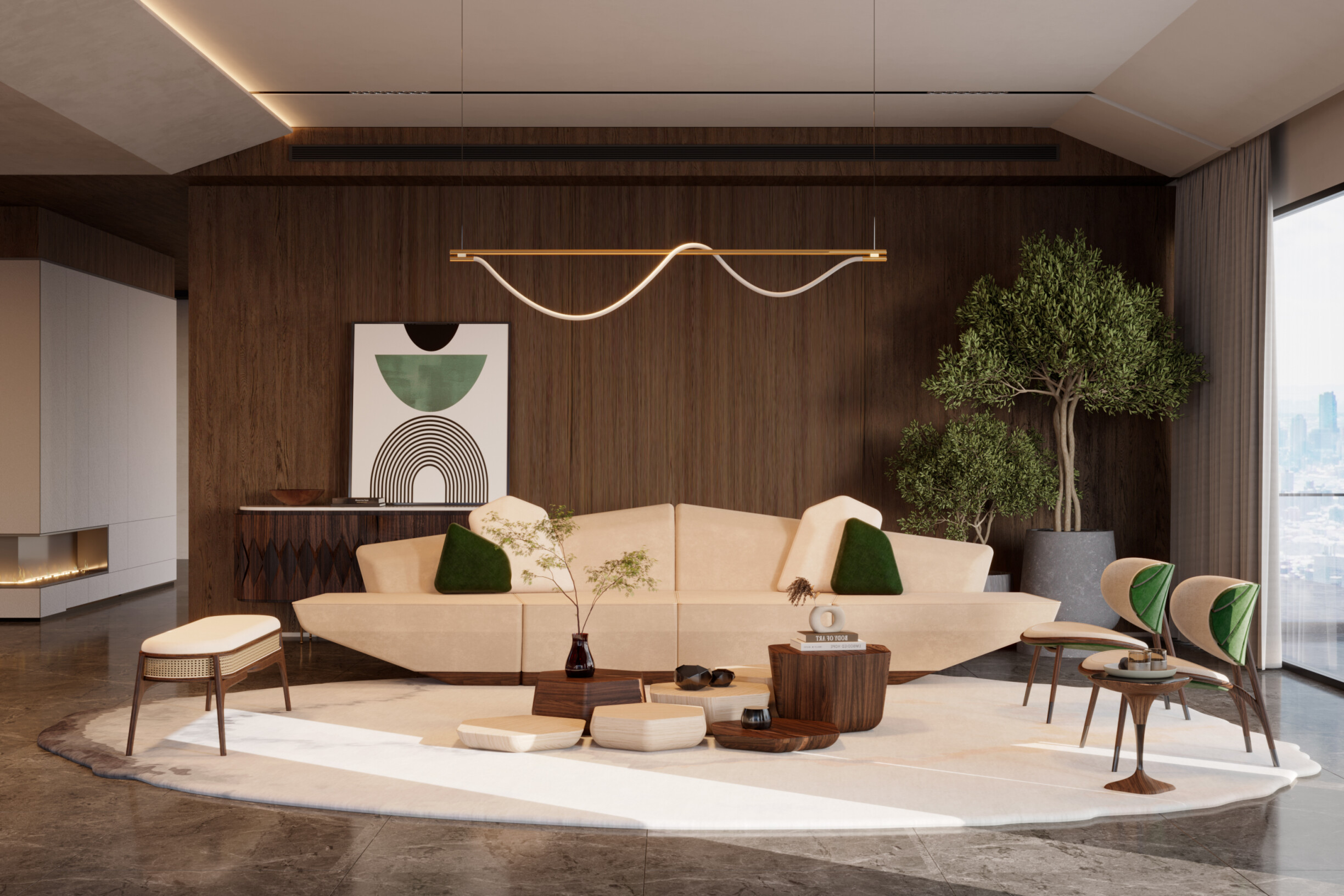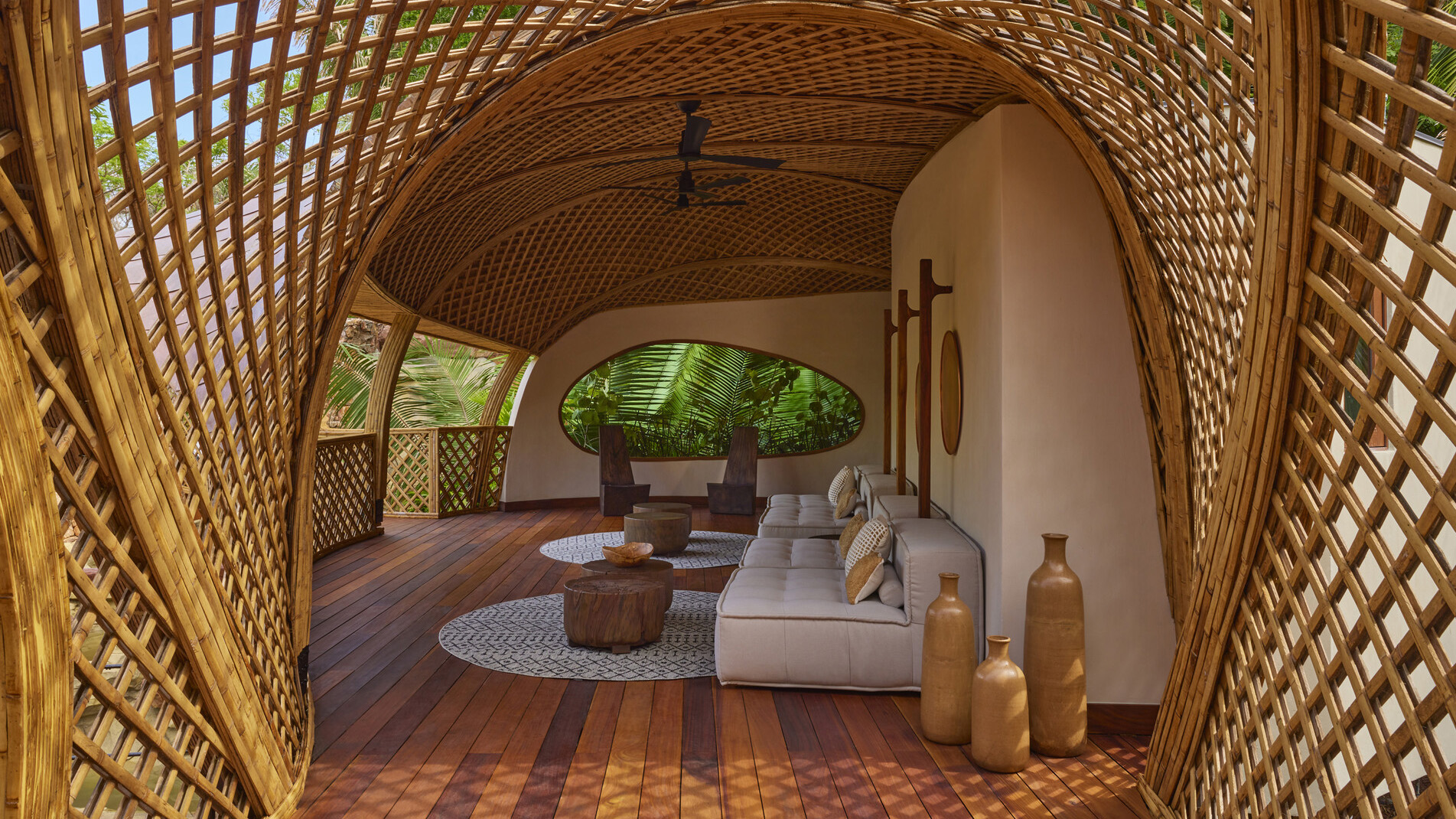Innovative sustainable design is no longer just a buzzword; it is a transformative philosophy that is reshaping how we conceive, create, and inhabit our built environments. In 2025, this approach is more critical than ever, driven by environmental imperatives and the demand for aesthetic excellence. Visionary designers like Ronan and Erwan Bouroullec are at the forefront of this movement, blending art, functionality, and sustainability to redefine luxury and responsibility in design.
In this comprehensive article, we explore the multifaceted world of innovative sustainable design through the lens of the Bouroullec brothers’ groundbreaking work. We will examine the core principles behind their approach, delve into key trends shaping the future of sustainable design in 2025, and highlight specific projects that illustrate how their vision is making a lasting impact on the industry.
Introduction: The Rise of Innovative Sustainable Design
Innovative sustainable design has emerged as a crucial framework for addressing global challenges such as climate change, resource depletion, and urban congestion. Today’s designers are tasked with creating spaces and products that are not only visually striking but also minimize environmental impact. The 2025 design landscape is defined by a commitment to resource efficiency, lifecycle thinking, and the integration of technology—all aimed at creating a more responsible and resilient built environment.

Ronan and Erwan Bouroullec are two designers whose work exemplifies these values. Their projects, ranging from elegant furniture collections to expansive installations, embody the principles of innovative sustainable design. By rethinking materials, optimizing production methods, and fostering adaptive reuse, the Bouroullec brothers are setting new standards in high-end design while championing eco-conscious practices.
The Bouroullec Brothers: Pioneers of Sustainable Aesthetics
Background and Philosophy
Ronan and Erwan Bouroullec, a celebrated French design duo, have long been recognized for their ability to fuse form and function in unexpected ways. Over the past decades, they have evolved from creating iconic furniture pieces to spearheading projects that emphasize sustainability. Their philosophy revolves around three key pillars:
- Simplicity and Functionality: Their designs are characterized by clean lines and minimalist forms that prioritize usability without compromising on beauty.
- Environmental Responsibility: The Bouroullecs are committed to reducing waste and employing eco-friendly materials. They believe that great design should enhance lives while preserving the planet.
- Adaptive and Timeless Design: They emphasize versatility and longevity in their creations, ensuring that products remain relevant and useful in a rapidly changing world.
Their approach to innovative sustainable design is reflected in every project they undertake. Whether it’s a piece of furniture made from recycled materials or a large-scale installation using renewable resources, their work consistently demonstrates that sustainability and high design can go hand in hand.
Core Principles of Innovative Sustainable Design
To fully appreciate the Bouroullec brothers’ contributions, it’s essential to understand the foundational principles that underpin innovative sustainable design. These principles guide designers in creating solutions that are as environmentally responsible as they are visually appealing.
1. Resource Efficiency
A critical aspect of innovative sustainable design is the efficient use of resources. This involves selecting materials that have a minimal environmental footprint, optimizing production processes to reduce waste, and ensuring that every element of a design contributes to overall sustainability.
- Material Selection: Designers are increasingly turning to recycled, renewable, and responsibly sourced materials. For example, reclaimed wood, recycled plastics, and bio-based composites are popular choices that reduce the demand for new raw materials.
- Energy Efficiency: From manufacturing to everyday use, energy-efficient designs help minimize carbon emissions. Innovations in insulation, smart lighting, and passive solar design are all part of this effort.
2. Life Cycle Thinking
Life cycle thinking is about considering the entire lifespan of a product or space—from production and use to eventual disposal or repurposing. This holistic approach ensures that environmental impacts are minimized at every stage.
- Durability and Repairability: Products designed with longevity in mind reduce the need for frequent replacement. The Bouroullec brothers focus on creating pieces that are built to last, with modular designs that can be updated or repaired.
- End-of-Life Management: Designing for disassembly, recyclability, or biodegradability is crucial. By planning for a product’s end of life, designers can help ensure that materials are recovered and reused rather than discarded as waste.
3. Social and Cultural Responsibility
Innovative sustainable design also addresses social and cultural dimensions, ensuring that design solutions are inclusive, accessible, and culturally resonant.
- Inclusive Design: Designs should cater to a diverse range of users, ensuring accessibility and comfort for all. This includes ergonomic considerations, universal design principles, and attention to user diversity.
- Cultural Integration: Incorporating local traditions and craftsmanship not only adds authenticity but also supports local economies. The Bouroullec brothers often draw inspiration from regional cultures, infusing their work with unique narratives and textures.
4. Technological Integration
The future of innovative sustainable design is closely linked to technological advancements. From digital fabrication to smart materials, technology enables designers to push the boundaries of what is possible while reducing environmental impact.
- Digital Fabrication: Techniques such as 3D printing and CNC machining allow for precise material usage and reduced waste. These methods enable the creation of complex forms with minimal resource consumption.
- Smart Materials and IoT: Innovations in material science, including self-healing polymers and energy-efficient composites, are transforming how products function. Integrating sensors and connectivity further enhances the efficiency and adaptability of design solutions.
Trends Shaping Sustainable Design in 2025
The year 2025 is witnessing a surge in sustainable practices across various design disciplines. Several emerging trends are particularly relevant to innovative sustainable design and are reshaping the industry landscape.
Modular and Adaptive Spaces
Modularity is a key trend that aligns perfectly with sustainable design principles. Modular systems allow for flexibility and adaptability, enabling spaces to evolve over time without the need for complete overhauls.
- Adaptive Furniture: Modular furniture systems that can be reconfigured to meet different needs are gaining popularity. These designs not only extend the product’s lifecycle but also reduce waste by eliminating the need for multiple pieces.
- Dynamic Layouts: In architectural design, spaces that can be easily adapted for different functions contribute to resource efficiency and user satisfaction.

Integration of Biophilic Design
Biophilic design, which emphasizes the connection between people and nature, is increasingly integrated into innovative sustainable design. This approach not only improves aesthetic appeal but also enhances well-being.
- Natural Elements: Incorporating elements such as living walls, natural wood, and water features creates a calming and rejuvenating environment.
- Enhanced Air Quality: The use of indoor plants and natural ventilation systems improves air quality and contributes to a healthier indoor environment.

Emphasis on Circular Economy
The shift towards a circular economy is transforming the way designers approach product development. Instead of the traditional linear model of “take, make, dispose,” a circular model focuses on recycling, repurposing, and continuous use.
- Design for Disassembly: Creating products that can be easily taken apart at the end of their life ensures that materials can be recycled or reused.
- Recycled and Upcycled Materials: Using recycled content in new products not only reduces waste but also conserves natural resources.

Smart and Connected Spaces
Technology is a driving force in 2025, and smart, connected spaces are a testament to this evolution. Integrating technology with innovative sustainable design enhances both efficiency and user experience.
- Interactive Installations: Digital interfaces and responsive design elements create engaging, personalized experiences for users.
- Energy Management: Smart sensors and automated systems optimize energy use, reducing consumption and lowering environmental impact.

Case Studies: The Bouroullec Brothers in Action
To truly understand the impact of innovative sustainable design, it is essential to examine real-world examples. Ronan and Erwan Bouroullec have a rich portfolio of projects that embody these principles. Here are a few standout case studies:
Recycled Innovation in Furniture Design
One of the most notable projects by the Bouroullec brothers involves a furniture collection made entirely from recycled materials. This project demonstrates a commitment to resource efficiency and life cycle thinking. By repurposing reclaimed wood and recycled plastics, they have created a series of pieces that are both visually appealing and environmentally responsible. The modular nature of these designs ensures that the furniture can adapt to changing needs over time, reducing the overall environmental footprint.
Modular Seating Systems for Adaptive Environments
In another groundbreaking project, the Bouroullec brothers introduced a modular seating system designed for public spaces and commercial interiors. This system is a prime example of how innovative sustainable design can address both functionality and aesthetics. The modular components allow for multiple configurations, catering to various social settings and spatial requirements. This adaptability not only extends the lifespan of the furniture but also minimizes waste by reducing the need for new purchases as trends change.
Sustainable Collaborations in Architecture
Beyond furniture,have collaborated with architects and urban planners on projects that integrate sustainable design principles into larger-scale environments. Their work on public installations and interior layouts emphasizes the use of eco-friend

ly materials and energy-efficient design strategies. For example, one project involved designing a community center using locally sourced materials, natural ventilation, and renewable energy sources. This collaboration demonstrated that innovative sustainable design can create spaces that are both functional and inspiring, while also serving the needs of the community.
The Future of Innovative Sustainable Design
As we look ahead, the principles of innovative sustainable design are poised to become even more integral to the design process. The ongoing integration of technology, along with a deeper understanding of material science, will drive further innovation. Designers like Ronan and Erwan Bouroullec are leading the charge, not only by creating beautiful and functional designs but also by inspiring a new generation of eco-conscious creators.
Challenges and Opportunities
Despite significant progress, the journey towards fully sustainable design is not without its challenges. Some of the hurdles include:
- High Initial Costs: Eco-friendly materials and advanced technologies can be expensive, potentially limiting accessibility for smaller projects.
- Consumer Education: Convincing end-users of the long-term benefits of sustainable design often requires a shift in mindset and greater awareness of environmental impacts.
- Technological Integration: Balancing advanced technology with timeless design principles requires continuous research and development.
However, these challenges also present opportunities for innovation and growth. As sustainable practices become more mainstream, economies of scale are likely to reduce costs, and continued research will lead to more efficient and affordable solutions. The work of visionary designers will undoubtedly pave the way for broader adoption of sustainable principles in all aspects of design.
Embracing a Holistic Design Approach
The future of innovative sustainable design lies in a holistic approach that considers environmental, social, and economic factors. This integrated perspective will drive the development of designs that are not only aesthetically pleasing but also contribute to a healthier and more equitable world. Designers will continue to push boundaries, creating products and spaces that resonate on multiple levels and stand as testaments to the power of sustainability.
Conclusion
Innovative sustainable design is transforming the way we create and experience our environments. The insights and pioneering efforts of Ronan and Erwan Bouroullec serve as a beacon for the industry, illustrating that sustainability and beauty can coexist harmoniously. Their work challenges conventional paradigms, demonstrating that eco-conscious design is not a compromise but a pathway to more responsible, adaptable, and timeless creations.
As we advance into 2025 and beyond, the principles of innovative sustainable design will only grow in importance. By embracing resource efficiency, lifecycle thinking, cultural relevance, and technological integration, designers can craft spaces that not only meet the demands of modern life but also pave the way for a greener, more sustainable future.
Whether you are a design professional, an architect, or simply an enthusiast of thoughtful aesthetics, the journey into sustainable design offers endless inspiration and opportunities for innovation. The transformative power of innovative sustainable design is evident in every project that prioritizes the well-being of people and the planet—an approach that is essential for the future of our built environment.
Let the visionary work of the Bouroullec brothers guide you in exploring new dimensions of sustainability in design. Their insights offer a roadmap to a future where design is not only innovative and luxurious but also fundamentally sustainable. Embrace this paradigm shift, and join the movement toward a world where every design decision contributes to a more responsible and inspiring future.
Why Nolita Harbour?
At Nolita Harbour, we understand the importance of design in creating memorable spaces. Explore our exclusive furniture collection to find pieces that bring the sophistication and elegance of world-class interior designs into your home.
Our Bespoke section includes exceptional interior design projects with Custom furniture that transform each room into a unique work of art.